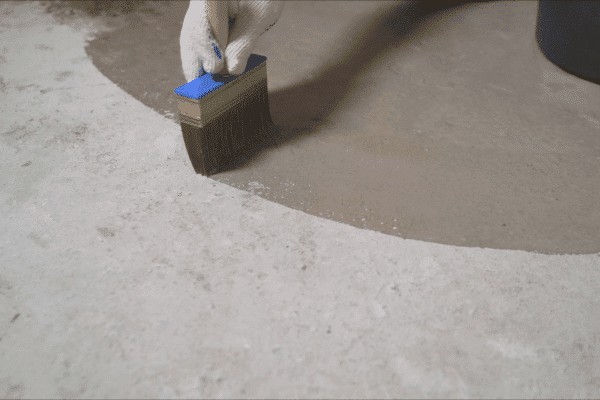NEWS
Key Tips for Durable Waterproofing with Liquid Membranes

When it comes to waterproofing your home or building, liquid membranes are a popular choice. These flexible, liquid-applied coatings are designed to form a waterproof barrier over a variety of surfaces, including concrete, wood, and metal. But, like all things, applying liquid membranes can be a tricky business.
To help ensure a durable and long-lasting waterproofing job, here are some key tips to keep in mind.
Surface Preparation
Proper surface preparation is the foundation of a successful liquid membrane waterproofing job. The surface must be clean, dry, and free of any contaminants, dirt, debris, oil, or grease. An uneven or dirty surface will prevent the liquid membrane from adhering properly and forming a waterproof barrier.
To ensure a strong foundation for your waterproofing, follow these steps for proper surface preparation:
- Thoroughly clean the surface to be waterproofed
This can be done with a wire brush, power washer, or scraper. Make sure to remove all dirt, debris, and any other contaminants that may be present on the surface.
- Use a degreaser to remove any oil or grease present on the surface
Oil and grease can prevent the liquid membrane from adhering properly and can also affect the overall performance of the membrane.
- Use a concrete etcher to roughen up the surface and create a better bond for the liquid membrane.
An etcher is a solution that is applied to the surface to create small pits and cracks, which allows the membrane to better adhere to the surface.
It’s also important to ensure that the surface is dry before applying the liquid membrane. Any moisture present on the surface can cause the membrane to fail and can lead to water damage. It’s recommended to wait at least 24 hours after cleaning the surface before applying the membrane to ensure that it is completely dry.
In addition, it’s important to remove any old coatings or paint that may be present on the surface. These old coatings can prevent the liquid membrane from adhering properly and can also affect the overall performance of the membrane.
Proper surface preparation is crucial to ensure a durable and long-lasting liquid membrane waterproofing job. Skipping this step or cutting corners can lead to costly mistakes and water damage in the future.
Application Techniques
When it comes to applying liquid membranes, there are several options to choose from, including roller, brush, or spray. Consider your skills and the size of your project when selecting the best application method for you. Here are some tips to keep in mind:
- Use a high-quality roller cover to ensure a smooth and even application when using a roller.
- When using a brush, work the membrane into all corners and crevices for full coverage.
- When using a spray, work in small sections and overlap each pass for a consistent application.
Choosing the Right Membrane
Different types of membranes, such as acrylic, polyurethane, and elastomeric, have different properties and are better suited to different types of surfaces and environments. To ensure the best results, consider the following when selecting a membrane:
- The type of surface being waterproofed
- The environment the surface will be exposed to
- The intended use of the surface
- Acrylic membranes are a good choice for surfaces exposed to sunlight and UV rays, as well as frequently walked on surfaces because of their abrasion resistance.
- Polyurethane membranes are best for surfaces that will be submerged in water because of their excellent waterproofing properties.
- Elastomeric membranes are perfect for surfaces that will be subject to movement or expansion and contraction such as concrete surfaces.
Maintenance and Inspection
Regular maintenance and inspection are crucial to ensure the longevity of your liquid membrane waterproofing job. Keep an eye out for any cracks, peeling, or other signs of wear and tear, and address them as soon as possible. These issues would be less common, however, if you decided to go with a reliable firm like London Damp Solutions. Here are some tips for maintenance and inspection:
- Regularly inspect the surface for any damage.
- Small cracks and peeling can often be repaired with a patching compound or a liquid membrane repair kit.
- If the problem is more severe, it may be necessary to remove and replace the existing membrane.
Conclusion
Waterproofing your home or building with liquid membranes is a great way to protect against water damage. But, like all things, applying liquid membranes can be a tricky business. To ensure a durable and long-lasting waterproofing job, be sure to properly prepare the surface, use the right application technique, choose the right membrane, and maintain and inspect the surface regularly. With these tips in mind, you can be sure that your liquid membrane waterproofing job will be a success.
Kenneth is a proud native of sydney, born and raised there. However, he pursued his education abroad and studied in Australia. Kenneth has worked as a journalist for almost a decade, making valuable contributions to prominent publications such as Yahoo News and The Verge. Currently, he serves as a journalist for The Hear Up, where he focuses on covering climate and science news. You can reach Kenneth at [email protected].










